Key takeaways:
- Natural light dramatically varies throughout the day, impacting the mood and detail of photographs.
- Different types of natural light—direct, diffused, and reflected—each create unique effects and enhance the storytelling aspect of images.
- Techniques like shooting during the golden hour, experimenting with angles, and modifying light with everyday objects can significantly improve photography.
- Personal experiences, such as capturing candid moments and unexpected weather conditions, highlight the transformative power of natural light in photography.
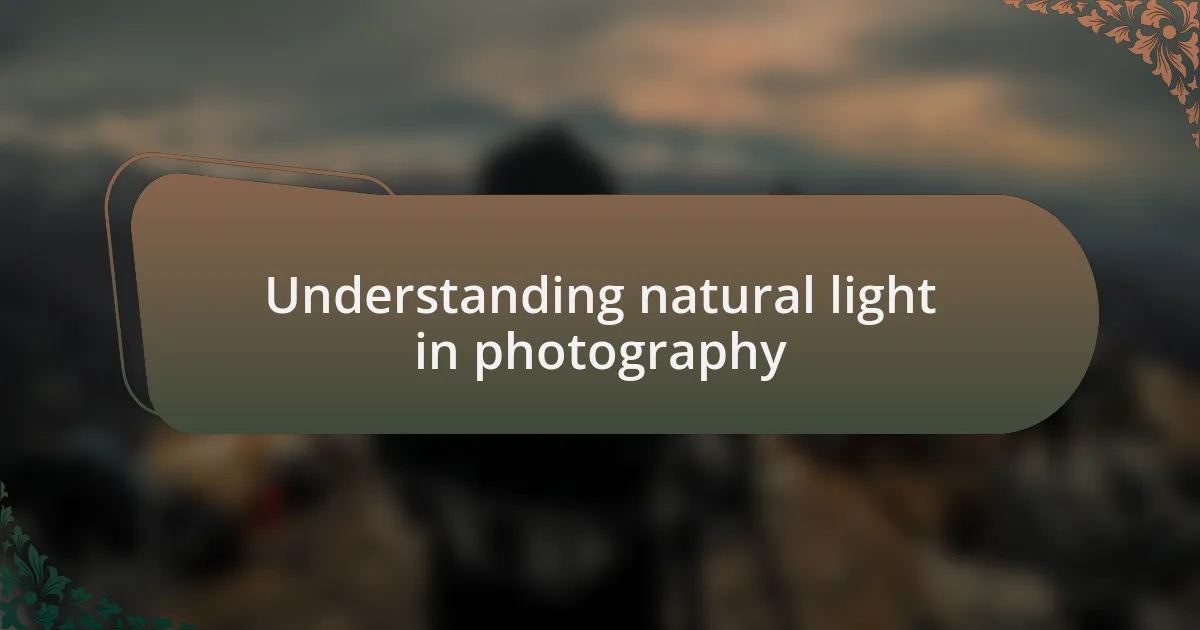
Understanding natural light in photography
Understanding natural light in photography can be a transformative experience. I remember the first time I shot during the golden hour—just before sunset. The way the warm tones wrapped around my subject created an emotional depth I hadn’t captured before. It made me wonder: how can something as simple as light be so powerful?
I’ve often found that the quality of natural light changes dramatically throughout the day. For instance, midday sun can be harsh and unflattering, casting unyielding shadows. I experimented with shooting at different times, and it was eye-opening to see how the soft morning light could bring out intricate details while leaving a dreamy glow.
Consider this: how does the light in a scene resonate with your subject’s story? When I work with portraits, I find that utilizing soft, diffused light from a window can add an intimate feel to the image. This kind of light not only reveals texture but also evokes emotion, truly connecting with viewers on a personal level.
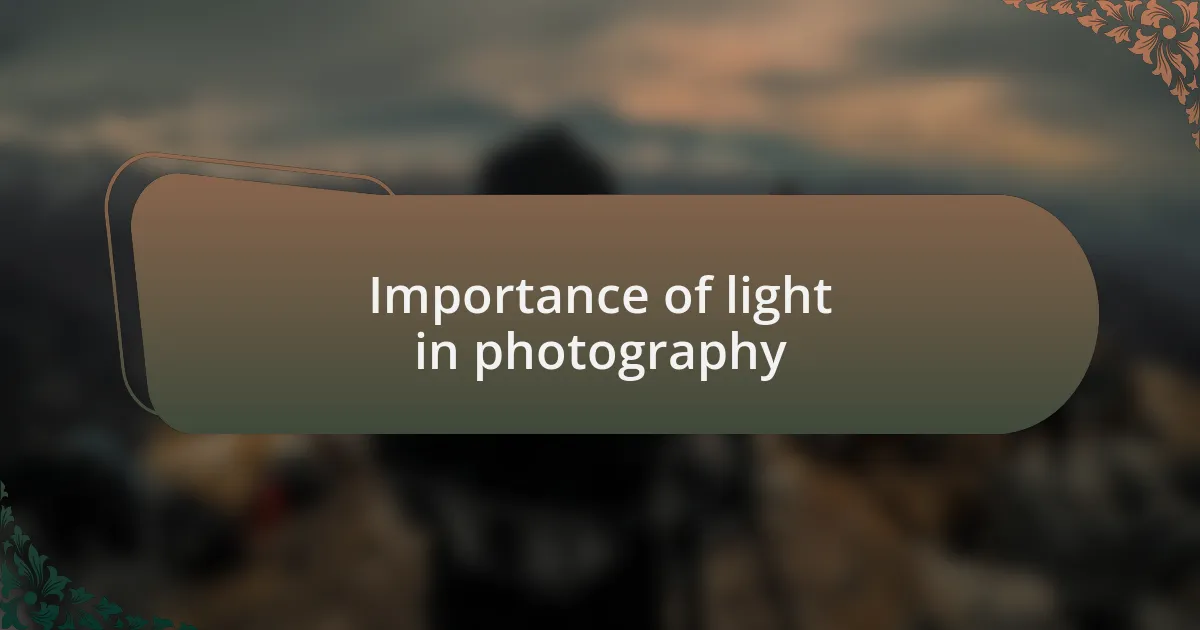
Importance of light in photography
Light is not just a component of photography; it’s the very essence that shapes an image. I recall a time when I used backlighting to capture a subject shrouded in mist. The way the light pierced through the fog created a magical halo effect that made the photograph feel ethereal. It reinforced my belief that light can transform the ordinary into something truly extraordinary.
When I first started delving into various types of natural light, I remember feeling a profound sense of revelation. Shooting on an overcast day, I discovered how the diffused light softened the colors and details of my subjects. It felt like the world had taken on a new softness, inviting my audience into a more serene and contemplative space. Have you ever noticed how cloudy skies can evoke a sense of calm that bright, sunny days sometimes overshadow?
The direction of light can also dramatically alter the mood of a photograph. I often play with side lighting, where shadows create depth and contours in my subjects. I still vividly recall capturing a profile in this light—how it emphasized the elegant lines and added an air of mystery. It’s fascinating how light not only illuminates but also defines the narrative within the frame.
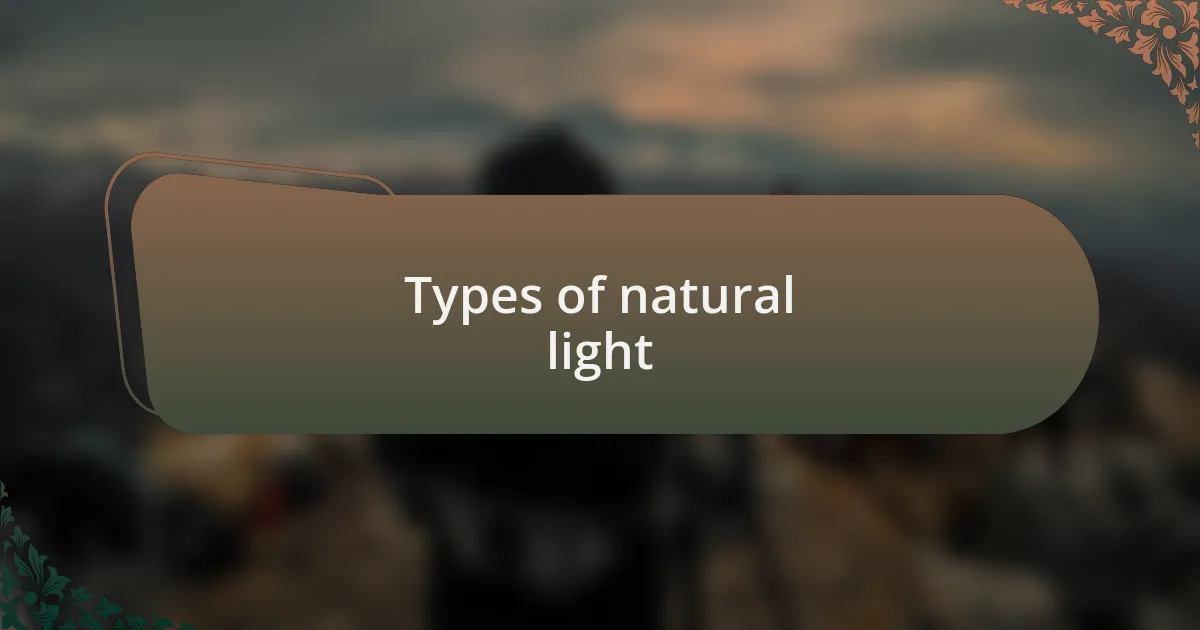
Types of natural light
Natural light can be categorized into three main types: direct, diffused, and reflected light. I remember one evening when I was experimenting with direct sunlight during the golden hour. The warm, rich tones bathing my subject created a sense of intimacy that simply wouldn’t have appeared under harsher light. Have you ever noticed how that golden glow can make even the most mundane moments feel special?
Diffused light, which typically happens on cloudy days or through objects like curtains, can be a game changer. I once took portraits using diffused light at an outdoor café, where the clouds acted as a giant softbox. The way it flattened shadows and lent a gentle softness to the skin tones was mesmerizing; it truly felt like I was capturing my subjects in their most flattering light.
Then there’s reflected light, which can magically enhance a photograph’s feel. I often find myself using nearby walls or surfaces to bounce light into dark areas of a scene. Just the other day, while shooting in a narrow alley, the sunlight reflecting off the bright-colored wall added a delightful warmth to my subject. It made me wonder—how often do we overlook the subtle, beautiful effects of light bouncing around us?
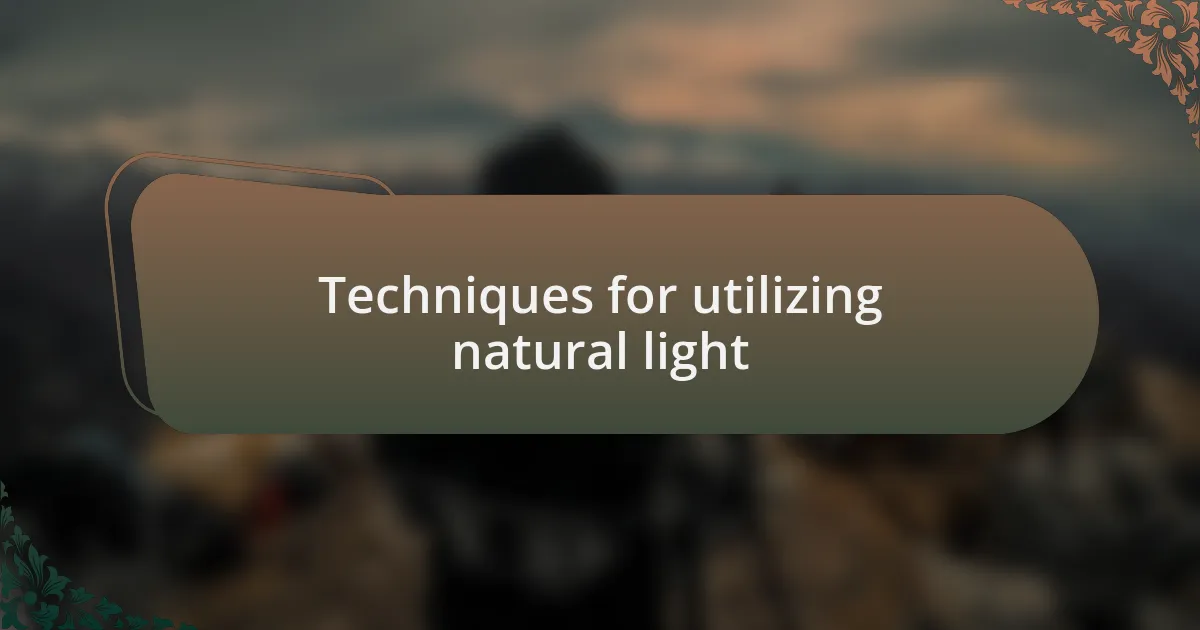
Techniques for utilizing natural light
Utilizing natural light effectively often comes down to timing and positioning. One of my favorite techniques is to shoot during the golden hour, which occurs shortly after sunrise or before sunset. I remember capturing a stunning landscape at that time; the light enveloped the scene in a soft, glowing embrace. Have you tried photographing during these magical moments? It genuinely transforms an ordinary setting into something extraordinary.
Another method is to experiment with angles. When I was shooting a vibrant floral arrangement in my garden, I noticed that the light hitting the petals from slightly above created mesmerizing shadows that added depth. I shifted my position just a bit, and suddenly the flowers told a story that was much richer. Isn’t it fascinating how merely changing our perspective can unlock new visuals?
I also can’t stress enough the power of light modification through objects. On one occasion, I used a sheer fabric to diffuse harsh afternoon sunlight on my subject. The result was a beautifully serene and even tone that enhanced my subject’s features. Have you thought about how everyday items can transform the way light interacts with your scene? It’s small adjustments like these that can truly elevate your photography.
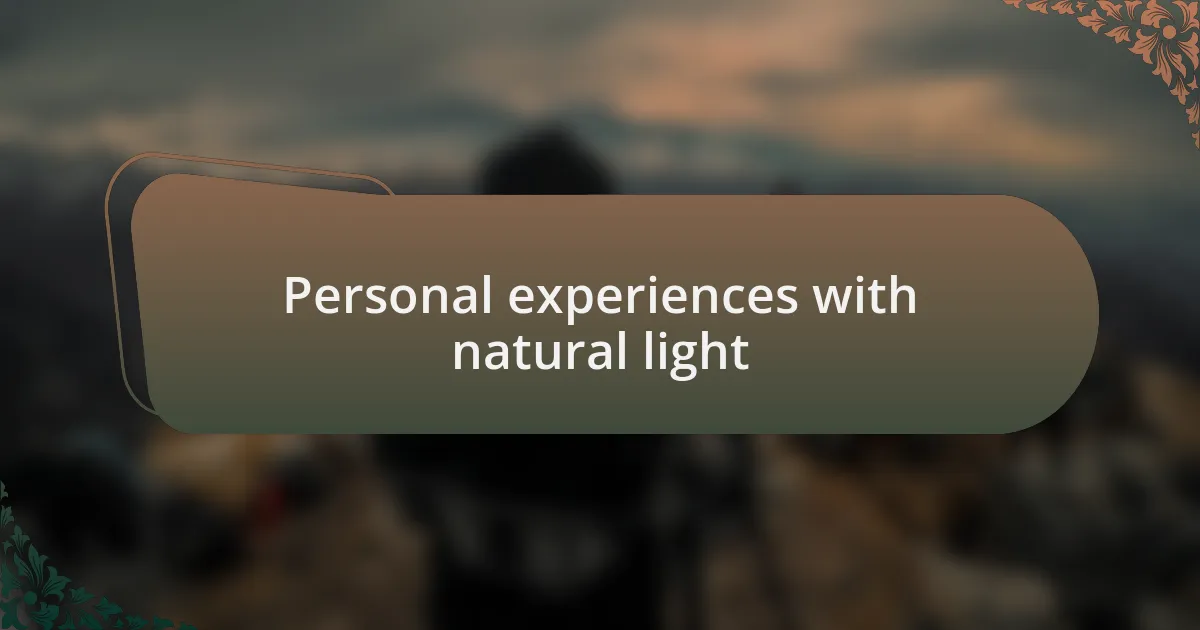
Personal experiences with natural light
I have had some unforgettable moments with natural light that truly shaped my photography style. One time, I ventured into a forest during midday, usually not ideal for photography. To my surprise, the dappled sunlight filtering through the leaves created beautiful patterns on the ground. I was so captivated by the way those light patches danced around that I felt as though I was in a living painting. Have you ever felt that connection between light and environment?
Another experience that stands out happened when I was capturing candid shots of street life. I found a perfect spot with sunlight bouncing off a nearby building, creating this gorgeous glow on my subjects. As people went about their day, the light seemed to highlight their emotions, turning ordinary moments into unforgettable captures. It made me realize how powerful natural light can be for storytelling in photography. Have you ever noticed how light can change the mood of a scene?
Lastly, I remember a rainy day that transformed my understanding of light completely. After the rain, I took my camera outside and was amazed by the way the clouds diffused the sunlight, softening its intensity. The colors around me looked richer and more vibrant, almost like everything had been washed clean. In that moment, I learned that even less favorable conditions can yield stunning results when you work with natural light. Do you embrace unexpected changes in weather when you shoot?